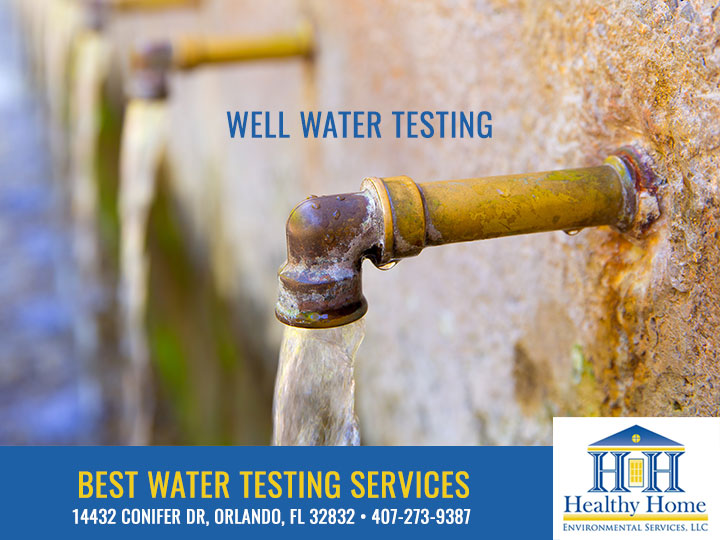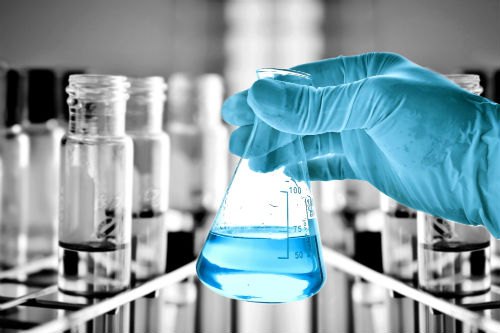Learn Exactly How Water Testing Can Spot Pollutants and Protect Your Household's Well-being
Recognizing the importance of water screening is crucial for protecting your household's health and wellness, as our water supply can harbor unseen threats. By exploring the technicians of water screening, one can uncover the unnoticeable dangers hiding in seemingly immaculate water resources.
Importance of Water Examining
Recognizing the essential function water plays in maintaining life, the importance of water testing can not be overemphasized. Ensuring that water is totally free from unsafe compounds is crucial for keeping healthy communities and environments. Well water testing services.
Water screening acts as an aggressive step to recognize possible hazards that may jeopardize water high quality. With organized evaluation, it helps find physical, chemical, and biological criteria that might present dangers to human wellness. Routine screening enables the very early discovery of problems, promoting prompt treatments to avoid extensive contamination and connected illness.
Additionally, water testing supports regulatory conformity, guaranteeing that water companies satisfy well established security criteria and standards established by governmental authorities. It promotes transparency and liability, constructing public trust fund in the water system. In addition, testing offers important information that educates water administration strategies, enabling lasting use and preservation of this precious source.
Basically, water testing is an indispensable device that safeguards public health and wellness, guarantees governing adherence, and advertises the lasting monitoring of water sources. Its significance in securing both areas and people can not be taken too lightly.
Usual Water Pollutants
Among the various components that can jeopardize water top quality, usual water contaminants consist of a series of physical, chemical, and organic substances that position considerable risks to human health and the environment. Physical impurities commonly entail sediments or natural materials suspended in water, which can influence quality and preference. Chemical contaminants include a vast selection important, consisting of chemicals, herbicides, metals like lead and mercury, and industrial chemicals. These chemicals can infiltrate water materials through agricultural drainage, industrial discharges, or leaching from pipes and storage containers.
Organic impurities, primarily bacteria, infections, and protozoa, occur from human and animal waste going into water systems. Microorganisms such as E. coli, Giardia, and Cryptosporidium are infamous for triggering stomach illnesses and can be specifically hazardous to children, the senior, and those with jeopardized immune systems. Nitrites and nitrates, usually originating from plant foods, posture one more health and wellness threat, especially to infants, potentially bring about problems like methemoglobinemia or "blue baby syndrome."
In addition, emerging contaminants, consisting of pharmaceuticals and individual care items, have increased worries because of their determination and unidentified long-lasting impacts. Recognizing these pollutants is important for applying effective water treatment approaches and making sure secure alcohol consumption water.
How Water Screening Works
Understanding the range of impurities in water underscores the relevance of reliable screening approaches to protect public wellness. Water screening is a systematic process created to determine and evaluate various pollutants that might pose risks to human health. This includes a collection of analytical procedures that discover impurities such as bacteria, hefty steels, natural chemicals, and various other contaminants. The screening process usually starts with example collection from the water resource, ensuring that samples are depictive and unpolluted during the collection procedure.
Chemical screening commonly involves spectrometry or chromatography, both of which can recognize and determine certain chemical substances. Additionally, physical attributes like turbidity, color, and ph are assessed to give insight into the total quality of the water.
The precise methods utilized in water testing depend upon the particular pollutants of concern and the water's planned usage. By regularly applying these extensive testing protocols, scientists and public health officials can make certain the my link security and quality of water, consequently safeguarding communities from potential health and wellness hazards.
Picking the Right Examination
Exactly how does one determine one of the most ideal water examination for their demands? Choosing the ideal examination entails comprehending both the particular characteristics of the water resource and the prospective impurities that might exist. The very first step is assessing the water source-- be it community, well, or surface water-- as each has unique threats. Metropolitan water could call for screening for disinfectant byproducts, while well water might require screening for nitrates, germs, and hefty metals.
Next, consider environmental factors and recent events. Nearby agricultural tasks could necessitate testing for pesticides and herbicides, whereas commercial areas can require checks for chemical contaminants. Furthermore, any kind of changes in water odor, look, or taste ought to motivate particular screening for common contaminants like lead, chlorine, or organic pathogens.
Specialist water screening solutions offer detailed sets that target a large range of potential contaminants. These packages often align with standards established by the Epa (EPA) or regional health and wellness divisions. For a more tailored technique, seeking advice from a water top quality expert can offer insights right into which details tests are needed based upon regional concerns and private health requirements, ensuring the protection of your home's wellness.

Maintaining Water Safety And Security

Along with testing, proper maintenance of water systems plays a vital function. This consists of evaluating and servicing plumbing systems, storage containers, and septic systems to stop leakages wikipedia reference or backflow that can introduce pollutants - Well water testing services. Utilizing water purification systems made to resolve details local issues can even more safeguard against impurities, offering an added layer of protection
Public awareness and education are just as important in keeping water safety. Areas should be notified concerning potential dangers connected with regional water sources and the needed steps to reduce them. Urging public involvement in water safety and security efforts promotes a collective responsibility that boosts total effectiveness.
Ultimately, an extensive approach that integrates regular screening, system maintenance, and area involvement is important in safeguarding water high quality. By doing so, family members Read Full Article can be ensured of risk-free and clean water, shielding their health and wellness and health.

Conclusion
Normal water screening is vital for recognizing contaminants such as germs, heavy metals, and chemicals that present health and wellness threats. By analyzing water samples, hidden dangers can be discovered, ensuring the provision of safe alcohol consumption water.
Recognizing the relevance of water screening is crucial for guarding your family members's wellness, as our water supply can harbor unseen risks.Water testing serves as an aggressive action to determine potential risks that might jeopardize water top quality.Moreover, water screening sustains regulative conformity, making certain that water companies fulfill established safety requirements and guidelines established by governmental authorities. Local water may call for screening for disinfectant by-products, while well water might require testing for nitrates, germs, and heavy steels.
Regular water screening is a critical element in preserving the quality of water resources, enabling timely interventions prior to pollutants reach hazardous levels.